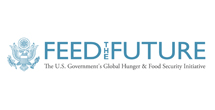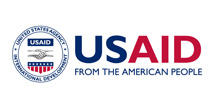Assessing spate irrigation in Afar Region
Project title: Socio-economic, Agro-ecological and Technical Potential of the Proposed Ascoma Spate Irrigation Project: Ada’ar Woreda, Afar National Regional State, Ethiopia
Lead researcher: Dr. Nuru Seid, Research and Community Services Vice President, Semera University
Collaborators
- Gebrehaweria Kidane Reda, Rangeland Ecologist, Semera University
- Siraj Mohammed, Economist, Semera University
- Sadik Bedru, Surveyor, Semera University
- Kerim Ebrahim, Irrigation Engineer, Afar Regional Water Bureau
- Tariku Teshale, Technical Advisor – private
- Natnael Demelash, Livestock Expert, Semera University
Research report – download the report seid-et-al-ascome-spate-report
Research summary
This research was conducted in Ascoma district (Ada’ar woreda, Afar regional state), with the objective of assessing the potential of increasing fodder production for livestock through the use of spate irrigation. Spate irrigation captures and spreads seasonal rainwater runoff/floods and was used in this area thirty years ago when 500 hectares was planted with Rhodes and local grass species. The scheme collapsed due to lack of local maintenance after the phasing out of the project, but Samara University study is now part of a plan to revive the scheme learning from past mistakes. Three studies have been undertaken towards preparing a community-managed spate irrigation intervention. They cover the potential socio-economic impact of the scheme, its agro-ecological feasibility as well as its technical feasibility.
The technical feasibility study assessed the potential of the Jeldi River to allow spate irrigation at Ascoma. It looked at soil type, rainfall data, topography, the length and elevation of proposed diversion structures and the materials available and needed. The socio-economic and agro-ecological studies were carried out through in-depth consultations with individual interviewees and key informants, group discussions and visual observations. Enumerators were recruited and trained, and purposive sampling procedures were followed to identify and select respondents from among resident pastoralists—namely respondents with experience and knowledge of the study site. Secondary data relevant to the study were gathered from district level agriculture and rural development offices and reviewed and analyzed. The perceived importance of spate irrigation and status of existing water resources were also covered during these studies.
The research generated information on livestock production and production constraints, rangeland degradation and traditional measures used to address it, as well as vegetation potential. The latter covered native vegetation composition, diversity and palatability level, and also invasive species encroachment levels. Plant specimens were sent to Addis Ababa University for identification. The potential market for fodder was also assessed, particularly with reference to the proposed Mille Quarantine Center, other beef and dairy production centers, and the need in times of drought for livestock producers in nearby areas.
The research findings reveal 99% of the people of the district are categorized as pastoralists, with livestock rearing as their primary task. Multiple species are kept (including goats, sheep, camels and cattle), with goats and camels increasingly replacing the sheep and cattle. Natural pasture and browse are used alongside some purchased supplementary feeds. Shortage of water/rain, feed shortages, diseases, bush encroachment, lack of markets and conflict are the main constraints to livestock production; with herd mobility, use of fodder trees, sale of animals, and the purchase of animal feed as the primary solutions. The native herbaceous layer of the rangeland vegetation has decreased from season to season, and from year to year, due to recurrent droughts.
Almost 100% of the interviewees were agreed on the importance of reinstating the spate irrigation scheme, with spate irrigation considered to be a best solution to solve the problems of feed scarcity in the study area. Rhodes grass, Panicum antidotalae, Panicum maximum, Cenchrus cilaris and Sudanese grass are seen as the best grass species; while lablab, cowpea, sesbania and leucaena are recommended as the best legume forage species to be sown in the proposed project area. The technical feasibility assessment calculated the size and elevation of the diversion structures that would be needed; the repairs that would be necessary to rehabilitate the previous irrigation structures; and the amount of materials that would be needed to create diversion structures. It is hoped that the detailed work put into this study will encourage donors and other agencies to fund the rehabilitation of the Ascoma spate irrigation scheme.


